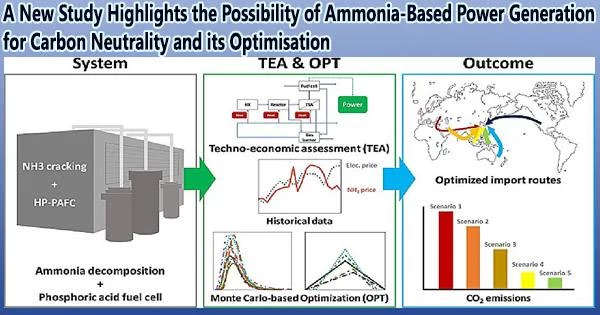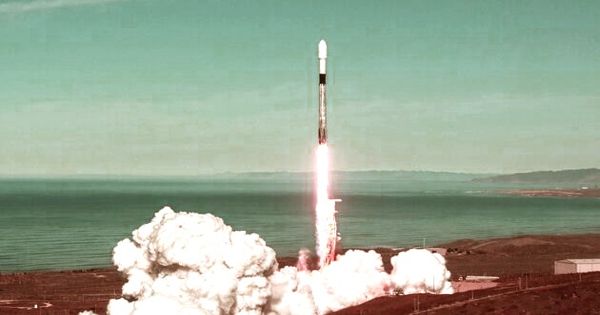Due to its natural carbon-free nature, ammonia is emerging as a possible energy source to attain carbon neutrality. Through techno-economic and carbon footprint assessments, a new study led by Professor Hankwon Lim from UNIST’s School of Energy and Chemical Engineering and Graduate School of Carbon Neutrality assessed the viability of ammonia-based power generation. The system that combines ammonia breakdown and phosphoric acid fuel cells is the subject of the research.
The study, which was carried out using a commercial process simulator, yields important conclusions on the effectiveness and viability of using ammonia in power generation systems. Results show that the planned power generation process has an exceptional energy efficiency rate of 46.7%.
Ammonia-based power generation is an emerging technology that involves using ammonia (NH3) as a carrier of hydrogen (H2) for energy storage and electricity production. It is part of the broader effort to develop sustainable and carbon-neutral energy systems. This technology has gained attention due to its potential to store and transport hydrogen more efficiently and safely than traditional methods while also reducing greenhouse gas emissions.
Through comprehensive economic analysis, the research team identified an upper limit for ammonia pricing at 421.3 $ tNH3-1 that allows competitive pricing against industrial electricity rates a crucial factor in determining market competitiveness.
Our study sheds light on the immense potential of ammonia as an energy source. We have analyzed costs and greenhouse gas emissions while considering different commercialized methods of producing ammonia. Although renewable energy sources were not part of this particular study, our findings offer crucial insights into enhancing ammonia exports and promoting sustainability.
Professor Hankwon Lim
On the basis of historical data from the top 10 exporting nations, five different scenarios were developed to further optimize ammonia imports into the Republic of Korea (KOR). Researchers maximized import volumes while reducing overall emissions by using the Monte Carlo approach to calculate ammonia production costs and carbon dioxide emissions in each country.
The results demonstrate that if solely reliant on carbon-based ammonia imports, carbon intensity ranges between 0.707-0.736 kgCO2-eq kWh−1 exceeding KOR’s average value over a 20-year period. However, achieving a ratio of over 78% of carbon-neutral ammonia (Scenario 4) can make both environmental and economic aspects more favorable.
The research team claims that their findings offer useful information for enhancing ammonia exports and lowering carbon intensity. Significant progress may be made toward sustainable energy solutions by adopting a comprehensive strategy that takes into account every phase of the supply chain.
“Our study sheds light on the immense potential of ammonia as an energy source,” said Professor Lim. “We have analyzed costs and greenhouse gas emissions while considering different commercialized methods of producing ammonia. Although renewable energy sources were not part of this particular study, our findings offer crucial insights into enhancing ammonia exports and promoting sustainability.”
The study findings have been published ahead of their official publication in the online version of Chem. Eng. J. on May 13, 2023.
The National Research Foundation of Korea (NRF), the Carbon Neutrality Demonstration and Research Center of UNIST, the Ministry of Trade, Industry and Energy and Korea (MOTIE), and Korea Evaluation Institute of Industrial Technology (KEIT) have supported this work. Their research is anticipated to advance our knowledge of and ability to use ammonia as a practical option for distributed power generation systems.















